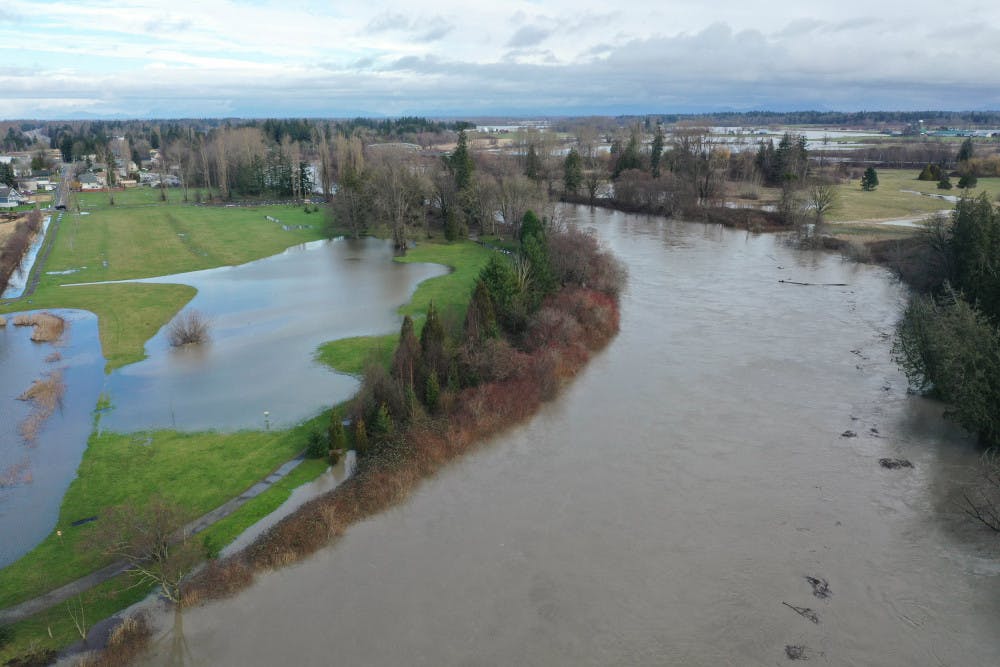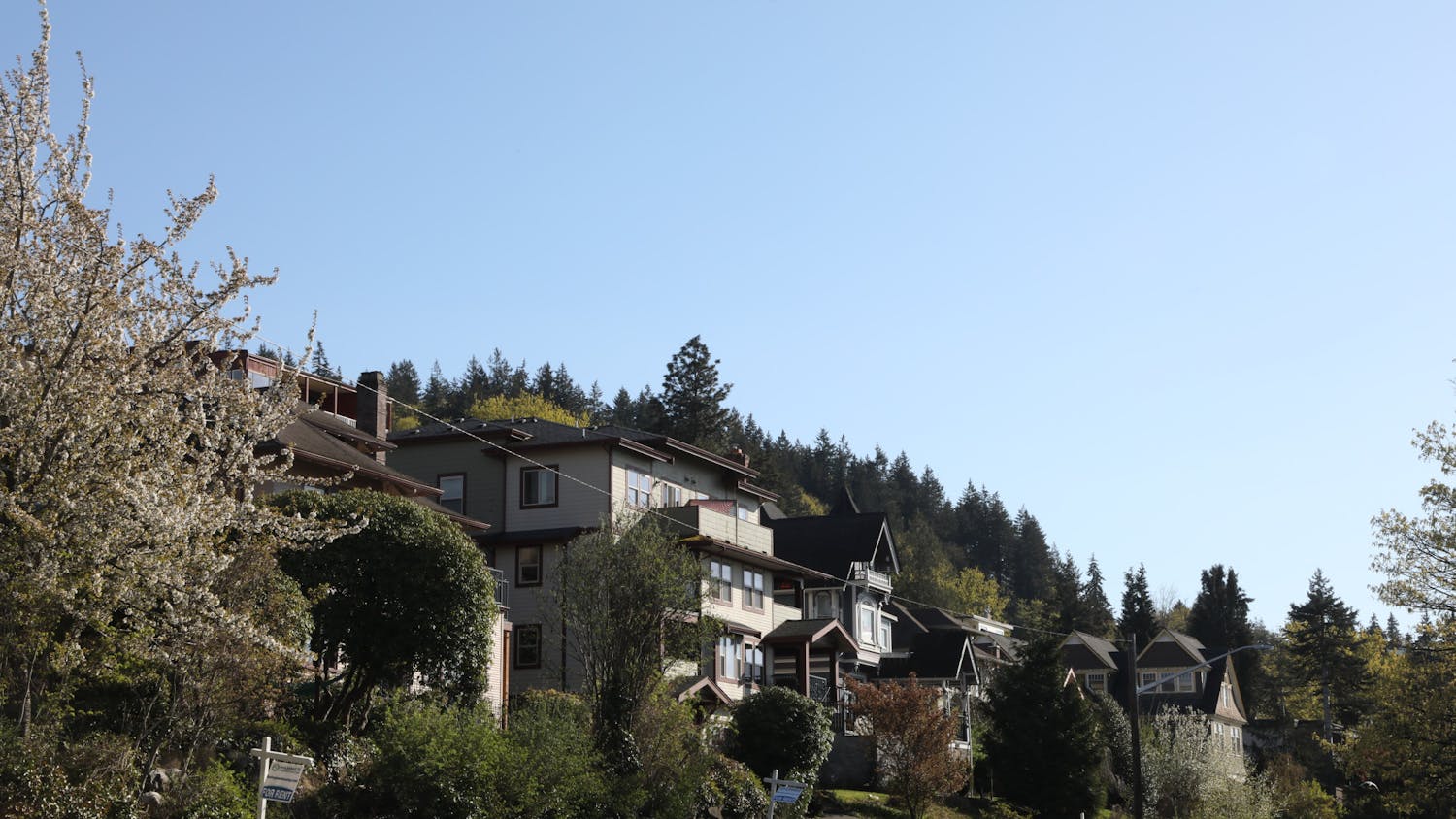
By Izzie Lund
Residents of Sumas, Everson and Nooksack are uniting in the wake of damaging floods that occurred during the weekend of Jan. 31.
The flood started in Everson as the Nooksack River overflowed and made its way towards Nooksack and Everson, Kyle Christensen, mayor of Sumas, said.
No one was hurt in the flood, but there was extensive property damage, with at least 26 houses and 10 businesses, in Sumas, reporting water damage, Christensen said. He said that Whatcom County is still assessing the damage and does not have official numbers as of the time of publication.
Ferndale was also flooded, but not to the same extent, Riley Sweeney, communications officer for the city of Ferndale, said.
John Gargett, deputy director of Whatcom County’s emergency management department, said during a public meeting on Saturday, Feb. 8 that the U.S.-Canada border at Sumas was closed for a period of time because cars were not able to drive through the flooded streets.
100 to 150 roads were closed countywide during the flood, Gargett said.
People could not get home due to road closures and had nowhere to go, said Sumas resident Teresa Sanders.
“By the time I got up, I couldn’t even get out of my street,” Sanders said. “The whole street was flooded. How can someone deal [when they say] ‘I’m homeless, I have nothing?’”
Sanders said that her neighbors woke up to their furniture floating and they had to evacuate to a hotel in Bellingham. She said that the family’s teenage daughter does not have a bed to sleep in.
“It was heartbreaking to see a family lose everything in just a moment,” Sanders said.
Sumas resident Anthony Bowen said his wife and two-year-old son were forced to leave their house while he stayed to salvage anything he could from the rising flood water.
Bowen said that the house had minimal flooding and only some damage, but that his shop was completely flooded with over 20 inches.
“I have a security camera in the shop,” Bowen said via Facebook message. “The water got deep enough [that] wooden shelves tipped over. The insurance adjuster said that 12 [inches] can lift a fully loaded fridge or freezer.”

City officials called the Sumas Advent Christian Church and asked them to open as an emergency shelter, Pastor Carl Crouse said.
Six to eight people spent the night in the church, Crouse said. He went on to say that the church made breakfast, collected clothes and blankets and did their best to support the community.
The Red Cross also assisted during the flood by passing out cleanup kits to help people clean their homes, the city of Sumas said on its Facebook page.
Team Rubicon, a nonprofit disaster relief organization, went to damaged houses and performed services such as removing carpet and bringing broken belongings to the curb for pickup, the Facebook page said.
Not only were medical service organizations and charities on full alert, but county and state executives also responded.
Whatcom County Executive Satpal Sidhu issued an emergency proclamation just before the flood on Jan. 31, allowing emergency officials to react more quickly.
Gov. Jay Inslee declared an emergency for 19 counties across the state, including Whatcom County, on Wednesday, Feb. 5 due to natural disasters, according to the governor’s website.
The county is now trying to get state and federal assistance to help with flood damage, Gargett said. He said that the first step in securing assistance is to report all of the damage.
“If you think you’ve only got $250 in damage, that is just as important as $250,000 in damage,” Gargett said. “Even if it’s only a couple hundred dollars in damage, please report that so that we can build the picture and seek as much assistance as possible.”
The levees in the Nooksack River did not break and cause the flood, Gargett said.
High rain levels and climate change most likely played a crucial role in the flood, according to Robert Mitchell, a geology professor at Western.
“Not only is rain falling, [but] the rain falling on lower elevations can melt that snow so it increases the amount of water,” Mitchell said. “So, that can increase the volume of water that enters the stream.”
Climate change has also caused temperatures to drive up and melt glaciers on Mount Baker, Mitchell said. He went on to say that melting glaciers bring sediments into the river, and as sediment builds up, it decreases the amount of water that the river can hold and makes it more likely to flood.
According to Mitchell, floods will most likely become more frequent in the future due to climate change.
Christensen identified himself as a strong supporter of dredging the river, which would involve scooping mud, weeds and sediments out with buckets or a net. He said that getting rid of unnecessary sediment would prevent these kinds of floods from happening again.
Christensen said that he hopes to bring up the issue of dredging to the community in the near future.





